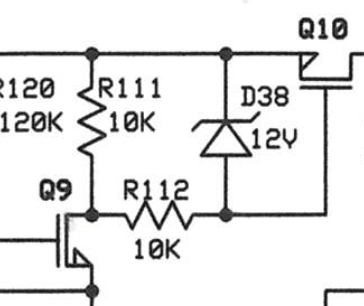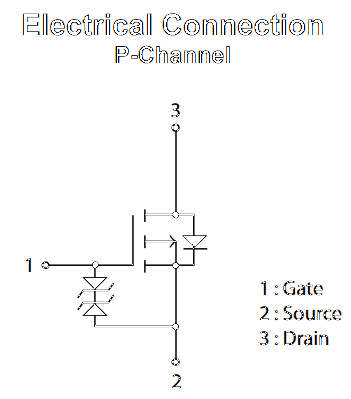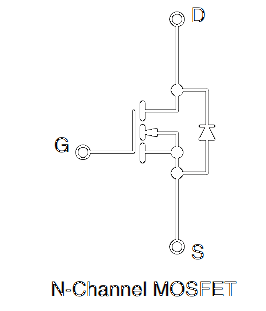As some articles point out, your original set of symbols are different than the ones that specify the body diodes, which are relative to the channel, hence, they point to the middle of the gate region. These, I think, are supposed to indicate the source terminal and direction of conventional current, hence ">" indicates a transistor where conventional current flows out of the source, making it n-channel, while the other device has conventional current flowing into the source, making p-channel. Moreover, the structure of the circuit suggests that the gate-source of Q10 is controlled by the common-source Q9, and the only way to shut off Q10 would be if Q10 is p-channel. Slight bias confirmation on my part, possibly.
{edit] I think this set of symbols is more consistent with BJT symbology. which likewise shows conventional current direction at the emitter. The body diode symbology was always an extra step for cognitive processing to say, "p-type" body, so "n-type" channel, so n-channel. BJT symbology, arrow points out --> NPN
TTFN (ta ta for now)
I can do absolutely anything. I'm an expert!
faq731-376 forum1529 Entire Forum list






